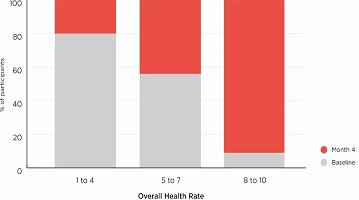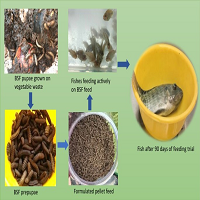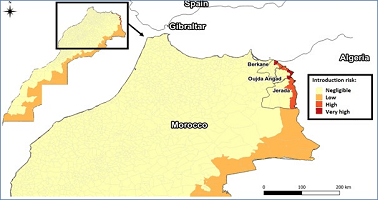1. American Academy of Sleep Medicine. International Classification of Sleep Disorders. 3rd ed. Darien, IL, USA; American Academy of Sleep Medicine; 2014. doi: 10.1378/chest.14-0970
2. Xie A, Bedekar A, Skatrud JB, Teodorescu M, Gong Y, Dempsey JA. The heterogeneity of obstructive sleep apnea (predominant obstructive vs pure obstructive apnea). Sleep. 2011; 34(6): 745-750. doi: 10.5665/SLEEP.1040
3. Barbé, Pericas J, Munoz A, Findley L, Anto JM, Agusti AG. Automobile accidents in patients with sleep apnea syndrome. An epidemiological and mechanistic study. Am J Respir Crit Care Med. 1998; 158(1): 18-22. doi: 10.1164/ajrccm.158.1.9709135
4. Yaggi HK, Concato J, Kernan WN, Lichtman JH, Brass LM, Mohsenin V. Obstructive sleep apnea as a risk factor for stroke and death. N Engl J Med. 2005; 353: 2034-2041. doi: 10.1056/NEJMoa043104
5. Sleep-related breathing disorders in adults: recommendations for syndrome definition and measurement techniques in clinical research. The Report of an American Academy of Sleep Medicine Task Force. Sleep. 1999; 22: 667-689.
6. SD Smith. Oral appliances in the treatment of obstructive sleep apnea-hypopnea syndrome. RCOE. 2002; 7(4): 391-402.
7. Hoffstein V. Review of oral appliances for treatment of sleepdisordered breathing. Sleep Breath. 2007; 11(1): 1-22. doi: 10.1007/s11325-006-0084-8
8. Scherr SC, Dort LC, Almeida FR. Definition of an effective oral appliance for the treatment of obstructive sleep apnea and snoring: A report of the American Academy of Dental Sleep Medicine. J Dent Sleep Med. 2014; 1(1): 39-50. Website. http://www.aadsm.org/resources/pdf/consesusReport.pdf. Accessed December 11, 2016.
9. Singh GD, Keropian B, Pillar G. Effects of the full breath solution appliance for the treatment of obstructive sleep apnea: A preliminary study. Cranio. 2009; 27(2): 109-117. doi: 10.1179/crn.2009.017
10. Ngiam J, Kyung HM. Microimplant-based mandibular advancement therapy for the treatment of snoring and obstructive sleep apnea: A prospective study. Angle Orthod. 2012; 82(6): 978-984. doi: 10.2319/071311-449.1
11. Dort L, Remmers J. A combination appliance for obstructive sleep apnea: The effectiveness of mandibular advancement and tongue retention. J Clin Sleep Med. 2012; 8(3): 265-269. doi: 10.5664/jcsm.1910
12. Farrow SJ. Successful treatment of central sleep apnea with an oral prosthesis. Chest. 1991; 100(5): 1461-1462. doi: 10.1378/chest.100.5.1461
13. Bradley TD, McNicholas WT, Rutherford R, Popkin J, Zamel N, Phillipson EA. Clinical and physiologic heterogeneity of the central sleep apnea syndrome. Am Rev Respir Dis. 1986; 134(2):217-221. Website. http://www.atsjournals.org/doi/abs/10.1164/arrd.1986.134.2.217. Accessed December 11, 2016.
14. Guilleminault C, Quera-Salva MA, Nino-Murcia G, Partinen M. Central sleep apnea and partial obstruction of the upper airway. Ann Neurol. 1987; 21(5): 465-469. doi: 10.1002/ana.410210509
15. Mohan A, Henderson J, Mador MJ. Mandibular advancement device-emergent central sleep apnea can resolve spontaneously: A case report. J Clin Sleep Med. 2016; 12(1): 137-138. doi: 10.5664/jcsm.5414
16. Thomas RJ. Alternative approaches to treatment of central sleep apnea. Sleep Med Clin. 2014; 9(1): 87-104. doi: 10.1016/j.jsmc.2013.10.008
17. Berry RB, Budhiraja R, Gottlieb DJ, et al. Rules for scoring respiratory events in sleep: Update of the 2007 AASM Manual for the Scoring of Sleep and Associated Events. Deliberations of the Sleep Apnea Definitions Task Force of the American Academy of Sleep Medicine. J Clin Sleep Med. 2012; 8(5): 597-619. doi: 10.5664/jcsm.2172
18. Badr MS, Toiber F, Skatrud JB, Dempsey J. Pharyngeal narrowing/occlusion during central sleep apnea. J Appl Physiol (1985). 1995; 78(5): 1806-1815. Website. http://jap.physiology.org/content/78/5/1806.long. Accessed December 11, 2016.
19. Thomas RJ, Tamisier R, Boucher J, et al. Nocturnal hypoxia exposure with simulated altitude for 14 days does not significantly alter working memory or vigilance in humans. Sleep. 2007; 30(9): 1195-1203. doi: 10.1093/sleep/30.9.1195
20. Sankri-Tarbichi AG, Rowley JA, Badr MS. Expiratory pharyngeal narrowing during central hypocapnic hypopnea. Am J Respir Crit Care Med. 2009; 179(4): 313-319. doi: 10.1164/rccm.200805-741OC







